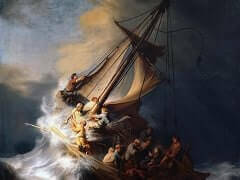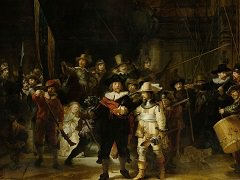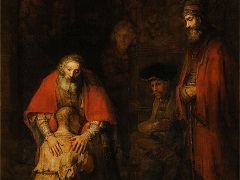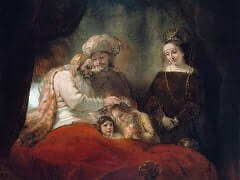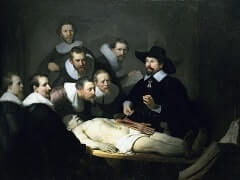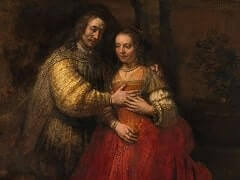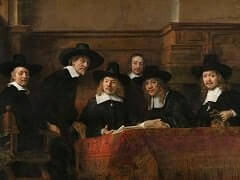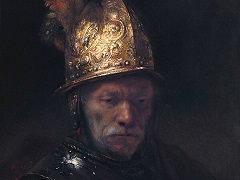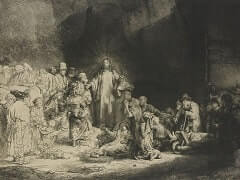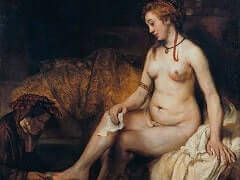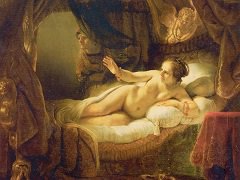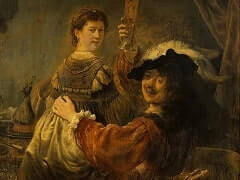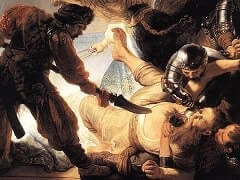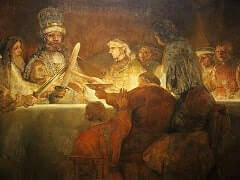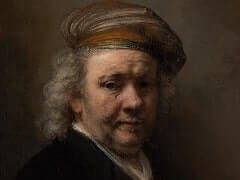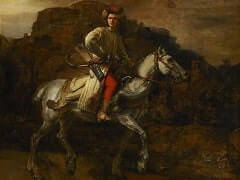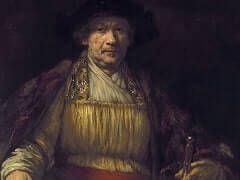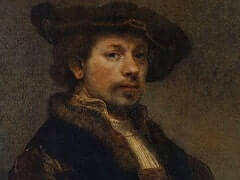Belshazzar's Feast by Rembrandt van Rijn
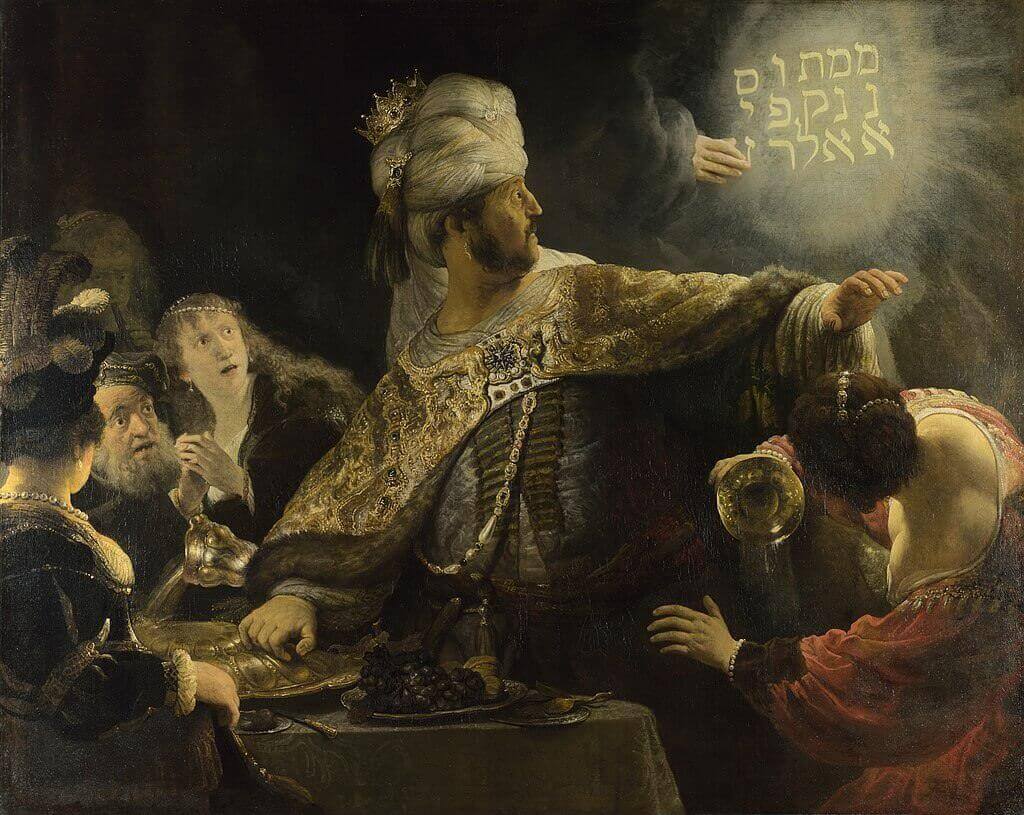
Rembrandt's source for this painting, the Old Testament Book of Daniel (5: 1-6, 25-8), tells of a banquet Belshazzar, King of Babylon, gave for his nobles. At this banquet he blasphemously served wine in the sacred vessels
his father Nebuchadnezzar had looted from the Temple in Jerusalem.
Belshazzar is a study in shock: he has turned his head at least 90 degrees, his neck is tensed and throat compressed. He is presented with an absolute mystery. While his bewildered eyes are fixed on the sinister glowing text,
his left arm rises to protect himself, as if he faces a physical rather than a spiritual attack.
His costume - the gold and silver thread, the chains, the turban with its little crown top - is one of Rembrandt's most luxurious concoctions of dress. Yet the still-life arrangement of fruit and dining utensils are not that
different from the comforts of affluent Dutch life in Rembrandt's day, giving this history a contemporary edge.
Rembrandt shows the moment when a divine hand appeared and wrote on the wall a phrase only Daniel could decipher. When transliterated the inscription reads: MENE, MENE, TEKEL, UPHARSIN. This is the interpretation: 'God has
numbered the days of your kingdom and brought it to an end; you have been weighed in the balances and found wanting; your kingdom is given to the Medes and Persians.' That very night Belshazzar was slain.

